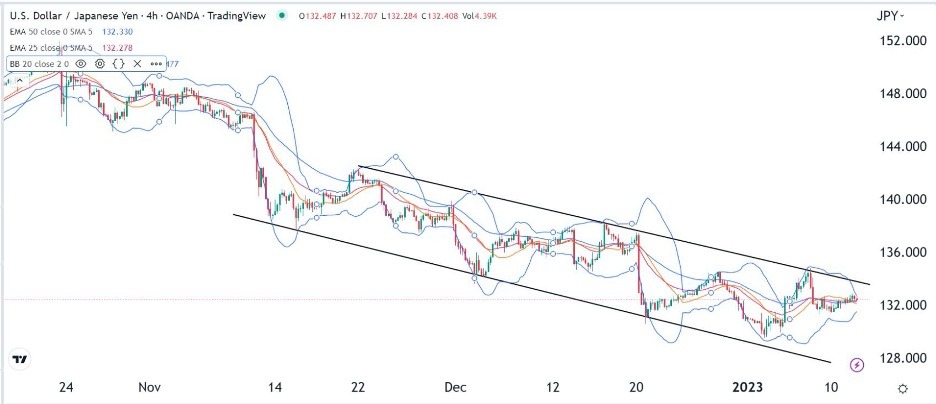Bearish view
Bullish view
- Set a buy-stop at 133 and a take-profit at 134.
- Add a take-profit at 131.50.
The USD/JPY exchange rate moved sideways on Thursday morning as the market waited for the crucial US inflation data. It was trading at 132.50, which was a few pips above this week’s low of 131.31. This price is also a few points above this month’s low of 129.71.
US inflation data ahead
The USD/JPY price will likely have some volatility on Thursday as the US publishes its monthly inflation figures. These numbers are important because they form one part of the Fed’s dual mandate, with the other one being on the labor market. Data published last Friday showed that the Fed has achieved its job mandate by pushing the unemployment rate to 3.5%.
The main data to watch will be the monthly change of the so-called core inflation figure. Core CPI excludes volatile food and energy prices. Economists expect that the core CPI rose by 0.3% in December from the previous 0.2%. On a YoY basis, analysts believe that the core CPI dropped from 6.0% in November to 5.7% in December.
Some analysts and traders will look past the headline inflation figures. The most important will be the so-called super core inflation, which includes core services excluding housing. This is important because, while the prices of most goods have fallen, services have ticked upwards. Core goods inflation has moved in the negative area recently.
Signs that America’s inflation is cooling at a faster pace than expected will be bearish for the USD/JPY exchange rate. With wage growth easing, it means that the Fed could be forced to recalibrate its hiking cycle. The recent minutes showed that most officials expect to maintain a hawkish tone in the coming months since inflation is still above its 2% target. Bond yields tilted lower ahead of the jobs release, with the 10-year falling to 3.61%.
USD/JPY forecast
The USD/JPY exchange rate has been in a tight range in the past few days. It is trading at 132.50, where it has been in the past few days. This price is a few points below the upper side of the descending channel shown in black. It is consolidating at the 25-day and 50-day moving averages while Bollinger Bands have converged.
The pair has formed a small rising wedge pattern. Therefore, the pair will likely have a bearish breakout after the US inflation data. This breakout could see it drop to a low of 130.

Ready to trade our free daily Forex trading signals? We’ve shortlisted the best Forex brokers in the industry for you.
